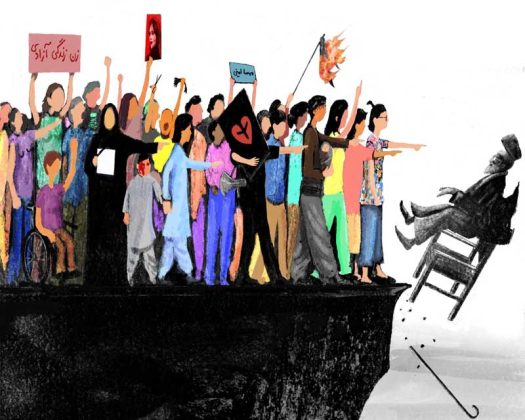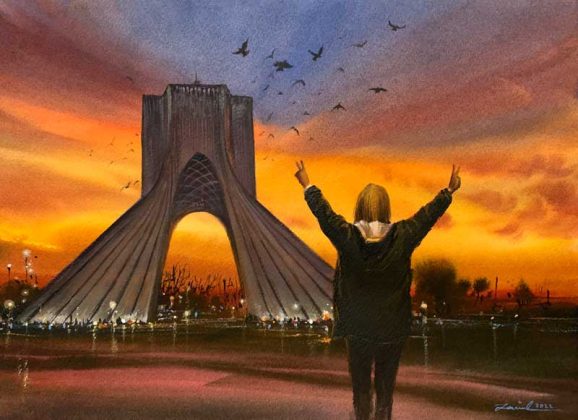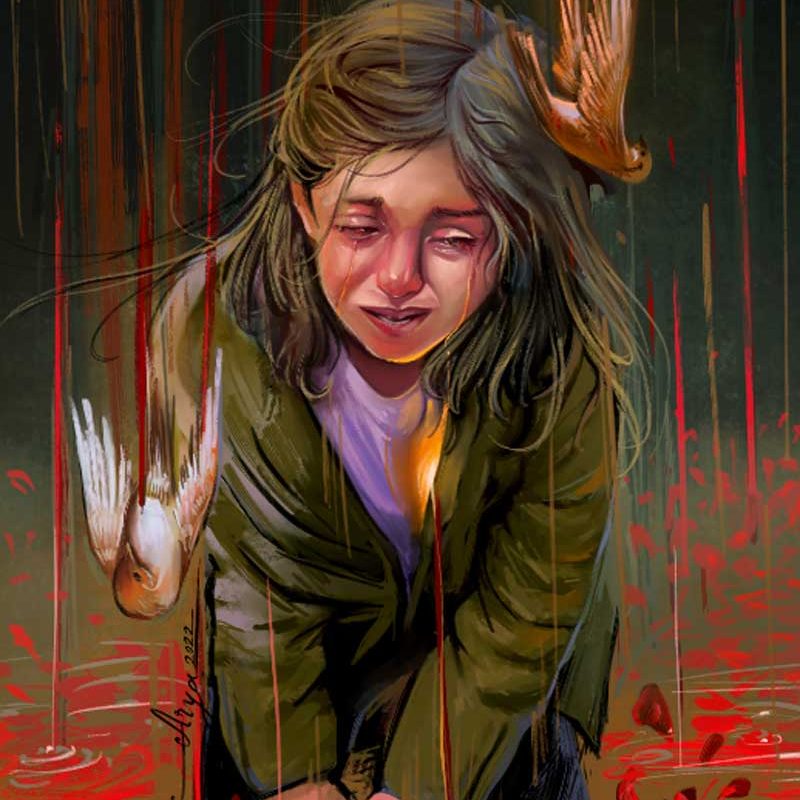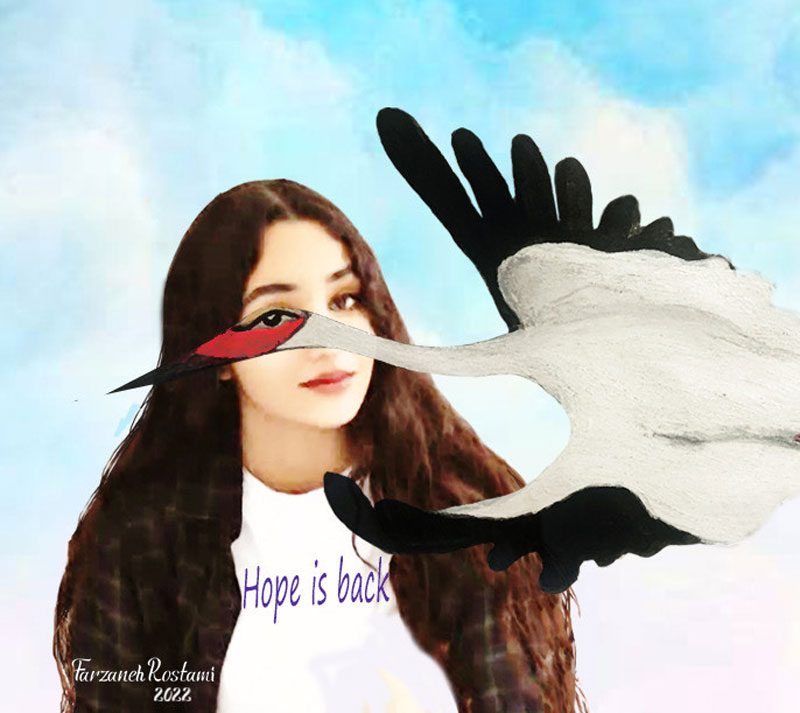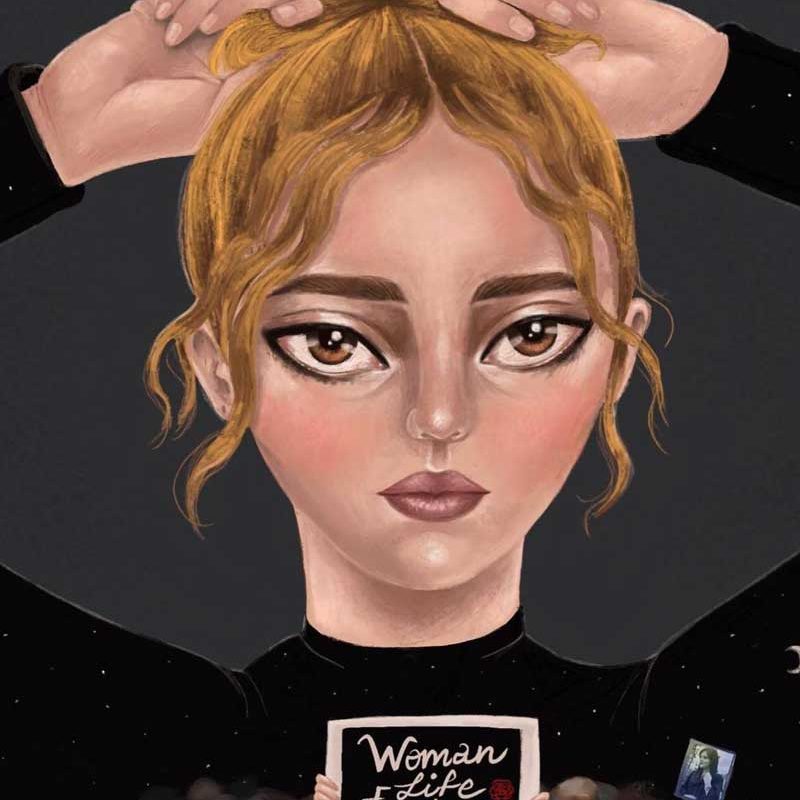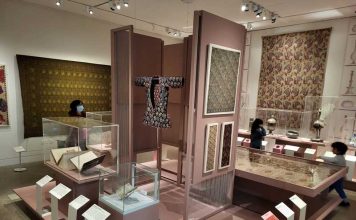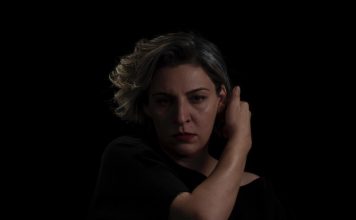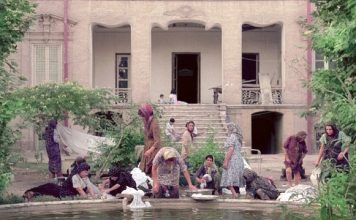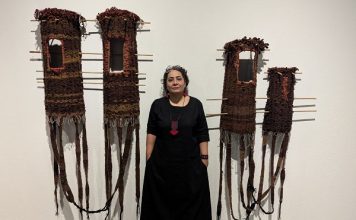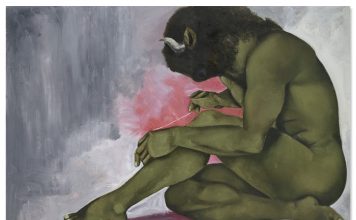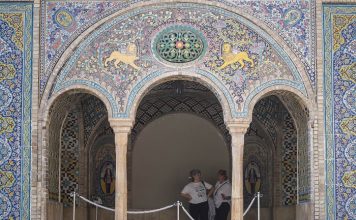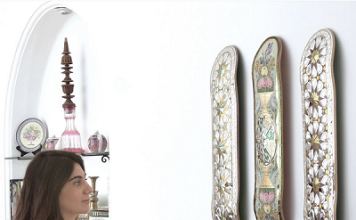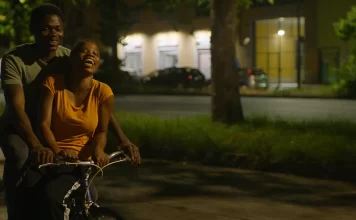By Ahmad Rafat
Some 52 works by contemporary Iranian artists, active in Iran and abroad, are on show in an exhibition titled “Five-Woman, Life, Freedom” at the Museum for Islamic Art in Jerusalem through April 1.
The exhibition “examines the Iranian protests that began in September 2022 through the stories of five women, among hundreds, who [paid] the price for opposing an extremist regime with their bodies and lives,” the museum said.
[aesop_image img=”https://kayhanlife.com/wp-content/uploads/2023/03/namayeshgah-zan-zendegi-azadi_1.jpg” panorama=”off” credit=”KL./” align=”center” lightbox=”on” captionsrc=”custom” captionposition=”left” revealfx=”off” overlay_revealfx=”off”]
“They are symbols, and their characters have been commemorated in artworks by contemporary Iranian artists across social media. This visual art tells a story of hope, defiance, unity, and courage displayed by a nation defying an extremist regime,” the museum added.
The exhibition’s curator, Orly Cohen, an Iranian-born researcher, told Kayhan Life: “We selected five women who participated in the recent protests against the mandatory hijab. They symbolize the fight for the freedom to choose.”
[aesop_image img=”https://kayhanlife.com/wp-content/uploads/2023/03/namayeshgah-zan-zendegi-azadi_poster.jpg” panorama=”off” credit=”KL./” align=”center” lightbox=”on” captionsrc=”custom” captionposition=”left” revealfx=”off” overlay_revealfx=”off”]
One of the five women had to be Mahsa (Zhina) Amini, a 22-year-old Kurdish woman from Saqqez, in the northwestern province of Kurdistan, who died while in the custody of the morality police on Sept. 16 in Tehran.
Ms. Amini had been arrested three days earlier for allegedly violating the Hijab Law, and fell into a coma and later died because of severe head injuries she suffered in police custody.
Amini’s death sparked a nationwide protest that has morphed into a “national revolution” with the slogan “Woman, Life, Freedom.” Since September, the movement has gained massive international support.
In the early days of this extraordinary national revolution in September, the hashtag #Mahsa_Amina became the world’s most-liked tweet, exceeding 300 million likes.
The Jerusalem exhibition’s curator, Orly Cohen, translated a selection of poems by Iranian poet Mehdi Mousavi (born 1976-) titled “The Bloodied Freedom Square” into Arabic and published it last year.
Cohen told Kayhan Life: “Vida Movahed, known to everyone as ‘Revolution Street Girl,’ is one of the five women.”
Vida Movahed, a 32-year-old Tehran resident, sparked a wave of protests against the compulsory hijab when she waved her headscarf in the air on Enghelab Street on Dec. 27, 2017.
Ms. Movahed, who has a young daughter, was convicted of “public agitation, prostitution, and corruption” and sentenced to one year imprisonment.
Some 29 women followed Movahed’s example and removed their headscarves to defy the mandatory hijab law.
Iran’s Judiciary Says Women Will Be Punished for Violating Islamic Dress Code -Irna
Another of the five women is Hadis Najafi, a 22-year-old woman shot dead on Sept. 21 in Mehrshahr, southwest of Karaj in the northern province of Alborz.
According to the medical examiner, Ms. Najafi was killed “outside a war zone by war weapons.”
Riot police and security forces fired live ammunition at a large crowd gathered in Karaj’s Behesht Sakineh cemetery to mark the 40th day of mourning for Hadis Najafi.
Najafi wrote on her Instagram account shortly before her death: “If I were to look back in a few years, I would like to have the satisfaction and joy of knowing that I participated in protests that changed everything.”
The fourth woman is Ghazal Ranjkesh, a 21-year-old law student in the port city of Bandar Abbas, the capital of the southern province of Hormozgan, who lost her vision in one eye after being hit by pellets on Nov. 15.
Writing on her Instagram account, Ms. Ranjkesh said: “Nothing can stop a person whose spirit is bulletproof. If that is the price we all must pay for our dream, then so be it.”
Bavan, a 7-year-old girl, is the fifth woman. Footage of her heart-wrenching cries at her mother’s grave, Fereshteh Ahmadi, is one of the most shocking images shared on social media.
Fereshteh Ahmadi, 32, died of a gunshot in her chest on Oct. 29 in Mahabad, in the northwestern province of West Azerbaijan.
The exhibition coincides with the release of Arash Sobhani’s musical drama “Payan-e Shirin” (“Happy Ending” or “Sweet Ending”) in Israel with the support of the Oslo-based Iran Human Rights. The film is about capital punishment in the Islamic Republic.
Two upcoming meetings will coincide with the exhibitions at The Museum for Islamic Art in Jerusalem.
Nazenin Ansari, publisher and editor-in-chief of Kayhan London and Kayhan Life, and Zohreh Mizrahi, a lawyer and advisor to The Constitutionalist Party of Iran–Liberal Democrats, will participate in a virtual meeting on March 8 titled “Iranian Women-Between Protest and Revolution.”
Dr. Tamar Eilam Gindin, a linguist and scholar of ancient Persia and modern Iran at the Shalem College in Jerusalem, and writer-director Maayan Eshkoli, will participate in a meeting titled “Queen Esther: The True Story.”
[aesop_image img=”https://kayhanlife.com/wp-content/uploads/2023/03/online-poster.jpg” panorama=”off” credit=”KL./” align=”center” lightbox=”on” captionsrc=”custom” captionposition=”left” revealfx=”off” overlay_revealfx=”off”]
In 2016, The Museum for Islamic Art in Jerusalem held an exhibition of 60 posters by 27 Iranian graphic artists titled “Sign, Contemporary Iranian Posters, From Iran.”

